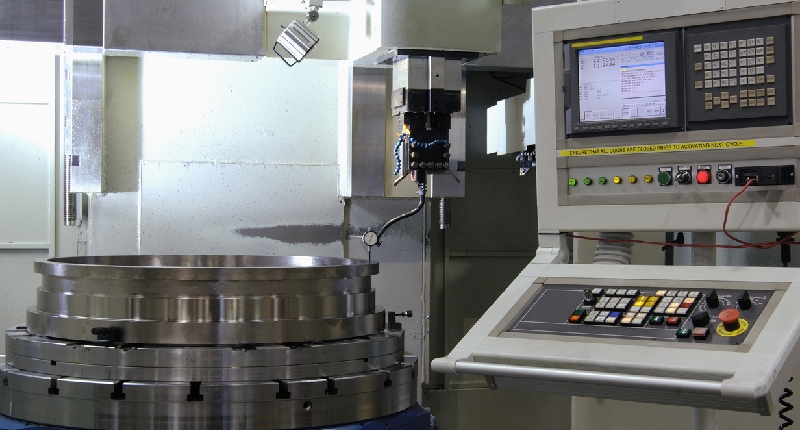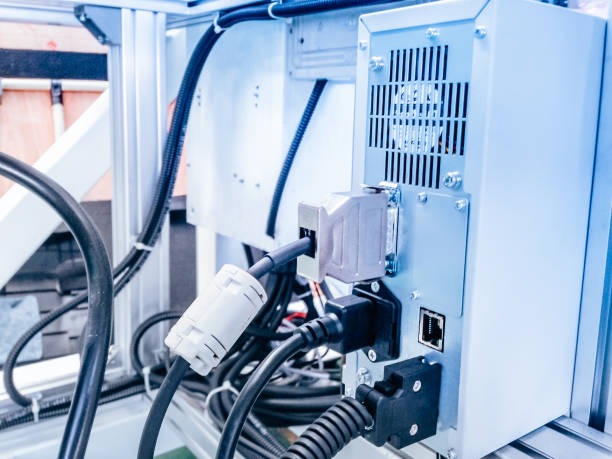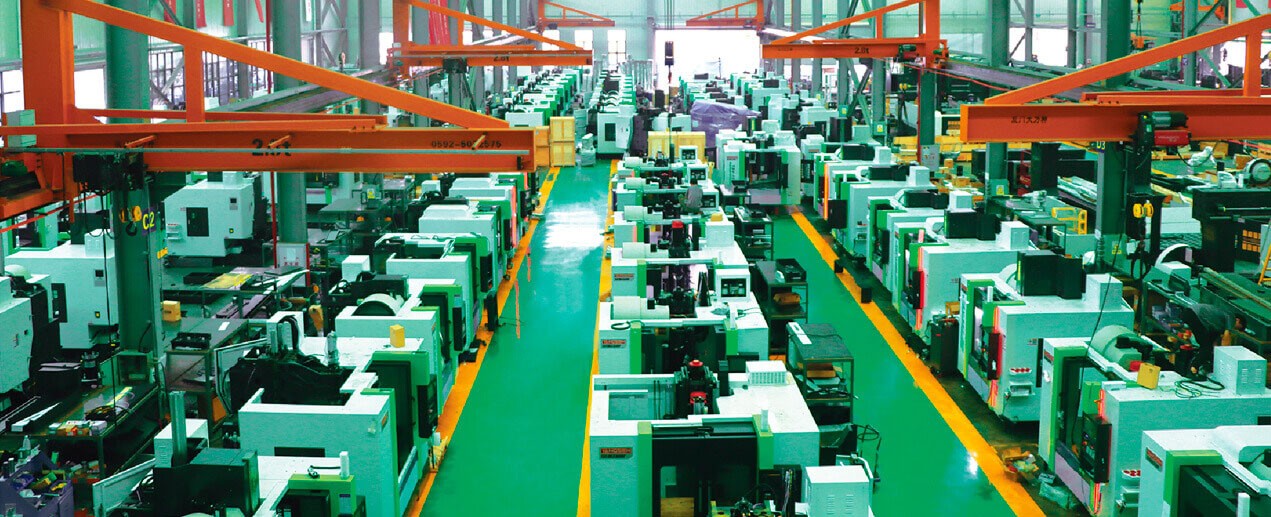Getting started with CNC closed-loop systems is more than a step - it opens up the world of precise manufacturing. Feedback is thus required; you will not find it a bonus. That is what it is: the servos, sensors, and codes work together to cause the movement exactly as intended.
Think of a CNC system like a band; everyone has to stay in sync. Drives, motors, and controllers each perform their respective functions. When something goes off track, feedback corrects it immediately. This keeps everything precise. Real machine shops employ this approach daily for aerospace components, medical equipment, and intricate molds.
For anyone getting into advanced machining, learning about CNC closed-loop systems isn't something to skip. It gives a real advantage.

A CNC closed-loop system uses feedback to control machining operations. Each movement gets checked and fixed instantly if needed. The basic concept works like this: the CNC instructs "move here," and then sensors verify that the movement has occurred. When it doesn't match up, the system makes corrections immediately.
Open-loop systems work differently; they simply send commands without checking the results. In an open-loop control system, slipping or backlash problems can only be recognized after the workpiece has been completed. Then it is too late to make any modifications.
A CNC Closed-Loop System isn't a single device handling everything. Multiple parts work together to ensure cuts are accurate and machines run properly. When any component isn't set up right, precision suffers. That's just how these systems work.
Here's what makes them tick.
Most systems use encoders or linear scales for this job. They report the exact position of axes or spindles at all times, like having eyes on the machine that constantly send updates. Without feedback devices, a CNC closed-loop system cannot detect when something slips or misses a movement.
These motors move the machine and respond to corrections instantly. Working with drives that control power and speed, they help the CNC Closed Loop System adjust positions in milliseconds. The response time makes all the difference.
The controller acts as the central brain. Receive commands and feedback, to check whether the movement has taken place accurately, and to correct anything needed. Good controllers process high-speed encoder data and adjust without delays that hurt performance.
Modern CNC closed-loop systems rely on sophisticated algorithms to process feedback data and apply corrections without overcorrecting. PID (Proportional, Integral, Derivative) control is one standard approach used for this work.
Starting up a CNC closed-loop system reveals a process that's both simple and incredibly effective. The controller sends a specific command to a servo motor or closed-loop stepper, such as "Move the table to 5 mm." Seems basic enough. But here's where things get interesting. While the motor is in motion, an encoder or linear scale tracks its actual position. That information is sent directly back to the controller.
The controller then performs a rapid comparison between what occurred and what was intended to happen. When the encoder reports "Actually at 4.98 mm," the system recognizes that it's off by a slight amount. It doesn't ignore this and keep going. Instead, it sends an instant correction - "Add 0.02 mm more" - and gets back on target. This entire cycle of command, movement, feedback, comparison, and correction runs hundreds or thousands of times every second. That's how parts stay within tight tolerances, even when cutting through tough materials or running for extended periods.
The real power comes from multiple control loops working together. A high-speed current loop handles torque, a velocity loop maintains the correct speeds, and a position loop locks everything into the correct position. Each loop connects to the next one, all of which are managed through PID algorithms that constantly adjust the output based on the incoming feedback.
What happens when the tool hits something unexpected, like a misaligned fixture or a chunk of hard material? The CNC Closed Loop System detects stalls or deviations immediately, ensuring smooth operation. The encoder reports the problem, the controller realizes it can't keep up, and alarms go off or the job stops. This saves both the part and the tool from getting damaged.
Speed matters here. Closed-loop control operates much faster than blinking, at thousands of cycles per second. That quick response keeps movements smooth, stable, and accurate. When something changes during cutting, the system adapts instantly.

So, what's the big deal? Why bother with a CNC Closed Loop System when an open-loop setup can still produce parts?
It's not about making parts. It's about making them right - fewer mistakes, less waste, and precision that repeats every single time.
Here's what happens when a CNC closed-loop system is installed on machines, such as a vertical machining center like the VMC Machine YSL-1580, a CNC lathe, or a gantry mill.
A CNC Closed-Loop System makes tiny adjustments while cutting. The machine doesn't just follow orders without thinking. It checks each movement and fixes problems right away. Parts remain within tight tolerances, even on long runs or complex shapes.
Accuracy means something real here. With constant position monitoring, the CNC Closed Loop System keeps tool paths on track. This reduces problems caused by backlash, tool bending, or heat expansion. Parts come out within spec, which means less scrap and rework.
Things go wrong during machining. Slips happen, steps get missed, tools wear out, and vibrations kick in. A CNC Closed Loop System spots these minor issues before they become big, costly headaches. It fixes them instantly, keeping things consistent even when cuts get difficult.
Feedback makes a CNC Closed Loop System different from everything else. Real-time data is collected by sensors and encoders and transmitted immediately to the controller. This allows for re-routing or speed changes on demand for the machine, as if it were being monitored for every single move.
Material changes, temperature shifts, or tool loading can cause drift. A CNC Closed Loop System catches these changes and corrects them immediately. The machining process remains stable and predictable regardless of the circumstances.
Precision doesn't mean going slow. Through a CNC Closed-Loop System, cycle times are reduced. High speeds are achieved while maintaining accuracy. More parts are completed, and machine time is utilized more effectively.
For lights-out machining, a CNC Closed Loop System becomes essential. It reduces the need for manual adjustments, allowing machines to operate independently while maintaining part quality throughout the entire process.
Comparing a CNC closed-loop system to an open-loop system reveals the distinct differences in their control handling. Open-loop systems send commands to motors and assume everything worked out fine. No checking. No follow-up. When the machine misses a step or slips under load, the system has no clue. That error shows up in the finished part.
A CNC Closed Loop System checks every single move. Real-time encoding or linear scales measure the actual position and compare it against the commanded position, correcting for any mismatch as soon as it is detected. Like when you have someone inspecting every move, minute by minute, to keep accuracy locked in.
It is the feedback that differentiates the CNC Closed Loop System from any other. The sensors supply constant data about the position and speed, and the controller can continuously adapt to the movement. Open loops have no such feedback and are therefore vulnerable to skipped steps, backlash, and errors, especially when cuts become heavy.
Put simply, closed-loop systems see what's happening. Open-loop systems cross their fingers and hope for the best.
A CNC Closed-Loop System can catch errors as they occur. When a tool bends under load or thermal changes cause drift, the closed-loop system compensates automatically. It builds tolerances tightly and better part consistency across whole production runs.
Open-ended systems will allow tolerance errors to accumulate, especially in long or complex operations. The unit continues when it has skipped a step. The result is an out-of-spec part.
Open-loop systems are less expensive and simpler to install. They work fine for basic jobs and hobby projects where precision isn't make-or-break, or where some scrap is acceptable.
A CNC closed-loop system requires more money upfront for encoders, advanced controllers, and servo motors. However, it reduces scrap, rework, and tool crashes over time. In production environments, this saves money in the long run.
Open-loop systems are suitable for handling simple cuts, low-volume prototyping, or woodworking where minor inaccuracies are not significant. For high-precision work like aerospace, medical, mold making, and automotive parts manufacturing, a CNC Closed Loop System becomes necessary.
At Yangsen, many CNC vertical machining centers and CNC routers are designed to work with closed-loop control systems. This allows shops to upgrade without major headaches and meet tighter tolerances.
Quick Comparison
|
Feature |
Open Loop CNC |
CNC Closed Loop System |
|
Feedback |
None |
Real-time via encoders/scales |
|
Error Correction |
None |
Immediate correction |
|
Accuracy |
Depends on setup |
High, consistent accuracy |
|
Cost |
Lower upfront |
Higher, but cost-saving in the long term |
|
Ideal Use |
Basic, low-precision jobs |
High-precision, production environments |
Here are the real reasons people invest in a CNC Closed Loop System. It's about machines that handle tight tolerances, long production runs, and unexpected problems.
Cutting wing spars or turbine blades means tolerances down to a few microns matter. The closed loop keeps the tool positioned correctly. Keeps surface finish perfect. Keeps certifications current.
Cylinder heads and transmission components need consistent geometry across thousands of cycles. Closed-loop feedback guarantees repeatability, ensuring that every part is produced consistently.
Whether it's plastic injection or die-casting molds, the surface finish must be flawless. A CNC Closed-Loop System handles direction changes and complex geometry without any wobbling.
Prosthetics, implants, and crowns - even a slight misalignment can compromise everything. Closed-loop systems keep every cut precise and properly calibrated.
Cutting large aluminum plates or composite structures raises genuine concerns about thermal expansion and structural flexibility. Closed-loop systems adjust for these variables while cutting.
It's not just about precision. It's about confidence. With a CNC Closed Loop System, there are fewer scrapped parts, less rework, and better profit margins on parts that absolutely cannot fail.
Picking the right CNC Closed Loop System isn't about guessing - it's about matching what's needed with what's available and what can be afforded. Here's how to think through it.
What tolerances matter for the work being done? When machining aerospace parts, detailed molds, or medical devices, precision can't be compromised. A CNC Closed-Loop System maintains tight specifications consistently. However, for prototyping, woodworking, or jobs where minor errors won't cause harm, simpler setups may suffice.
Different machines require different approaches. Vertical machining centers, horizontal mills, CNC lathes, and routers all benefit from feedback. Some machines utilize linear scales, while others work with encoders.
Big difference here: rotary encoders versus linear scales. Rotary encoders are less expensive and more effective at handling shorter axes. Linear scales are more expensive but provide better accuracy over longer distances. For high-tolerance work, linear feedback makes a real difference.
Even great feedback systems fail when controllers can't handle fast data. Make sure the controller can process feedback loops efficiently. Check that servo drives or closed-loop steppers support feedback. Some older drives weren't built for modern CNC Closed-Loop System speeds.
Initial costs run higher; that's true. But look at the bigger picture: less scrap, fewer crashes, more consistent processes. In high-volume or high-precision shops, a CNC Closed Loop System often pays for itself within a year. Don't just consider the cost of buying-think about the long-term benefits.
A CNC Closed-Loop System helps keep your parts precise, but it still requires regular attention to perform consistently. Basic checks and simple troubleshooting prevent small problems from becoming expensive downtime.
Encoder cables and connections require regular inspection and maintenance. Loose connections cause position feedback errors, which trigger alarms or result in incorrect part placement. Check linear scales or encoders for dust and debris. Clean carefully using the methods recommended by the manufacturer, as these components are easily damaged.
Even a CNC Closed-Loop System needs periodic calibration to remain accurate. Run test cuts or calibration routines on the controller to check positional accuracy. When drift occurs, recalibrate the system to maintain tight tolerances.
The system will sound alarms when it detects position errors beyond acceptable limits. Don't ignore these warnings. Look out for cable faults, encoder misalignment, or servo drive failures immediately.
A CNC Closed Loop System provides real confidence. It's not magic - it's monitoring power. Sensors monitor every move; controllers address problems or intervene when necessary. This creates better parts, fewer mistakes, and smoother production.
Open-loop systems make educated guesses. Closed-loop systems? They work with actual data. Huge contrast in accuracy, consistency, and efficiency. Industries such as aerospace, mold making, and medical device manufacturing all benefit greatly from such systems.
Yangsen CNC Machine designs vertical, horizontal, and gantry mills to work seamlessly with closed-loop systems, allowing for the addition of encoders, servos, and smarter controllers as required.
For parts that consistently meet tolerances and save time and money, a CNC Closed Loop System deserves serious consideration. Reach out for help selecting components or planning an upgrade.
